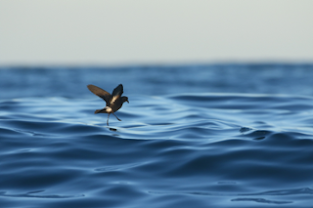Abstract: Lead intoxication is an important threat to human health and a large
number of wildlife species. Animals are exposed to several sources of
lead highlighting hunting ammunition and lead that is bioavailable in
topsoil. Disentangling the role of each in lead exposure is an important
conservation issue, particularly for species potentially affected by
lead poisoning, such as vultures. The identification of lead sources in
vultures

and other species has been classically addressed by means of
stable-isotope comparisons, but the extremely varied isotope signatures
found in ammunition hinders this identification when it overlaps with
topsoil signatures.
In addition, assumptions related to the exposure of
individual vultures to lead sources have been made without knowledge of
the actual feeding grounds exploited by the birds. Here, we combine lead
concentration analysis in blood, novel stable isotope approaches to
assign the origin of the lead and GPS tracking data to investigate the
main foraging grounds of two Iberian griffon vulture populations
(N = 58) whose foraging ranges differ in terms of topsoil lead
concentration and intensity of big game hunting activity. We found that
the lead signature in vultures was closer to topsoil than to ammunition,
but this similarity decreased significantly in the area with higher big
game hunting activity. In addition, attending to the individual home
ranges of the tracked birds, models accounting for the intensity of
hunting activity better explained the higher blood lead concentration in
vultures than topsoil exposure. In spite of that, our finding also show
that lead exposure from topsoil is more important than previously
thought











